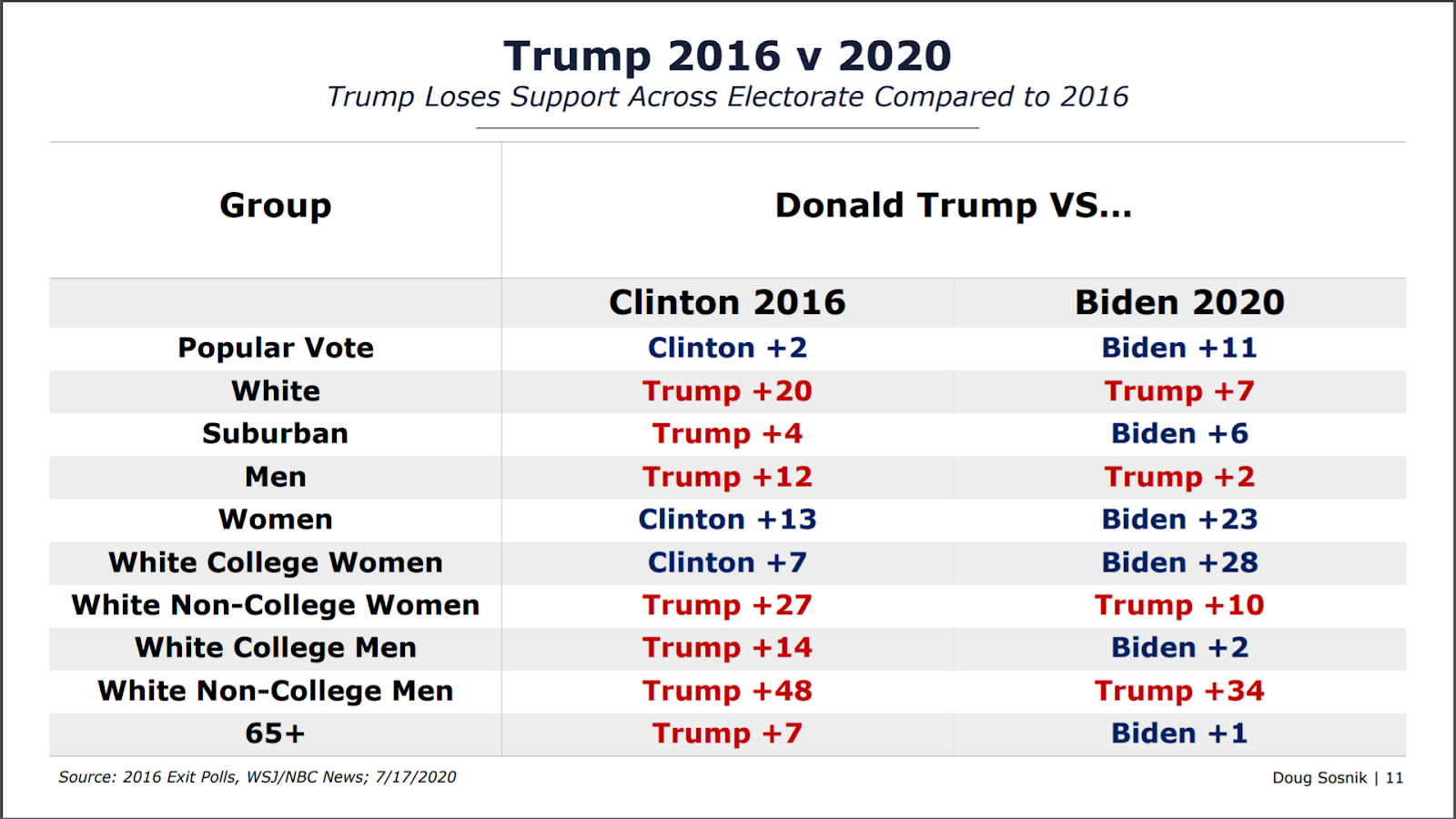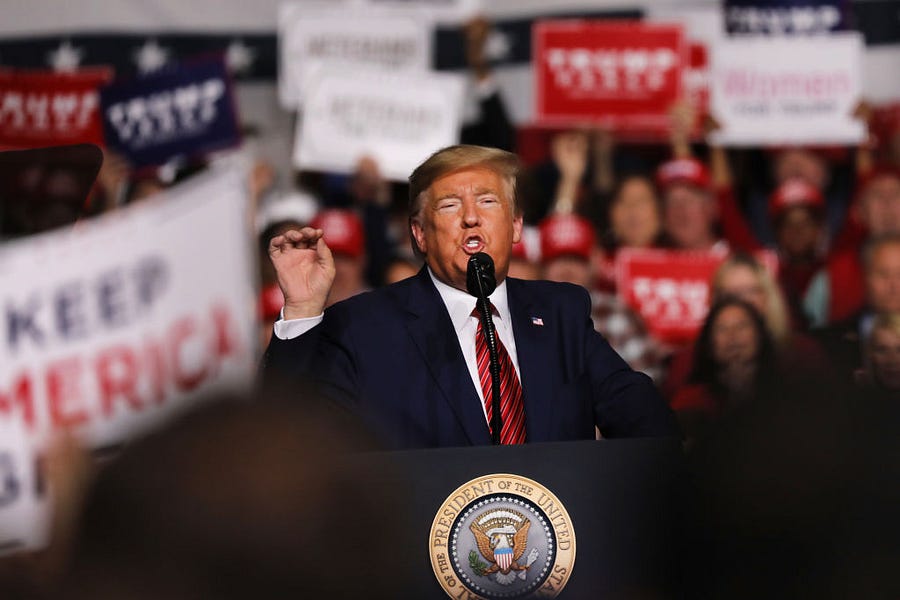Welcome to The Sweep—a new Dispatch newsletter that will cover the last stretch of Election 2020. For those who are curious, the title comes from this piece in which I argued:
Curling is the perfect analogy for political campaigns. The underlying dynamics of an election cycle (the economy, the popularity of the president, national events driving the news cycle) are like the 44-pound “stone” hurtling toward the (please hold while I google what the, you know, bullseye thing is called) … “house.” Once the stone is moving, this thing is heavy and it’s got momentum that is out of the “skip’s” control. The campaign staff are like the guys with the brooms that are frantically sweeping the ice as this 44-pound rock slides along the ice.
Well, since I wrote that I’ve been credibly informed (by no less than the coach of the gold medal-winning U.S. men’s curling team) that sweepers can actually make quite a sizable difference but that this was nevertheless a “pretty good analogy.”
With that ringing endorsement, I pitched our Dispatch overlords (re: Steve) on a campaign newsletter that will focus on the strategy and mechanics of political campaigns, with some behind the scenes flavor along the way. How do VPs get vetted, what are voter scores (and what’s yours), what does it feel like backstage at a presidential debate?
My first campaign was John Cornyn’s 2002 Senate race. I spent most of my time licking stamps (remember when that was still a thing?) and cutting out news clips (also used to be a thing). But I also got to organize volunteers for a letters-to-the-editor campaign, watch our communications director spar with reporters, and hear our policy director—now Rep. Chip Roy—pontificate on conservatism. I fell in love with the pace, the camaraderie, and the feeling that I was contributing to something larger than myself. Since those heady days of fax machines and landlines, I’ve worked on three presidential campaigns and any number of down-ballot races. And within campaigns, I’ve bounced from the legal team to opposition research to communications.
I want you to leave each week feeling like you know what is going on behind the scenes in these campaigns and understanding the factors that go into the big decisions. But I won’t be the only voice you hear from. We’ll include reporting from others in our Dispatch family like Andrew Egger who writes great pieces like this and even Steve whenever he finds a rabbit to go chase. And, most importantly, I want to answer your questions.
This inaugural edition of the newsletter is going out to our entire Dispatch audience. Future Monday editions will, as with this one, be posted online for everyone to read and share. To receive it as an emailed newsletter, however, you’ll need to sign up here. “Bonus” editions will be sent during the week exclusively to our paid members. If you haven’t joined The Dispatch yet, you can do so here.
With that, let’s dive in…
Campaign Quick Hits
Cash on hand as of June 30:
Trump/RNC: $295 million
Biden/DNC: $242 million
Senate update: The Cook Political Report now predicts Democrats will pick up 5-7 senate seats in November. (Remember: they need a net of 3 seats if Biden wins the White House to take the majority.)
Why Trump will win re-election according to Sen. Mitt Romney: “There are enormous advantages to being the incumbent, number one. Number two, I think [Trump] will tack more towards the middle in his communication than he has so far. And number three, I think the voters that are most animated in opposition to the president tend not to come out to vote ― and that’s young people and the minorities. They’re active in polls, but not necessarily active at actually getting out to the polls.” From Romney’s interview with the Huffington Post.
Slide from former White House political director Doug Sosnik’s well-researched deck (h/t Axios):

“Not Great Bob”: The Ad Blitz Has Started
We may be fewer than 100 days from the last day of voting but we are just weeks away from the first. Battleground states like Pennsylvania and Michigan begin in-person voting in September.
But the campaigns, as we all know, have been well underway. This week, CNN reported that presidential election spending passed the $1 billion mark already as “spending by Trump and affiliated party committees has topped $900 million since 2017.”
Where is all that money going? Most of it to television ads, of course!
The two sides have already reserved more than a quarter billion dollars worth of ad time. That’s a lot. But what’s far more interesting is where they are reserving it. The Biden campaign is up in Arizona, Florida, Michigan, North Carolina, Pennsylvania, and Wisconsin next week. The Trump campaign, however, is planning to go up in twice as many states, including Ohio and Georgia—perhaps indicating just how many states they believe need to be in play in order for the president to hold on to the White House this time or maybe just taking advantage of their (rapidly shrinking) fundraising edge.
Let’s take a quick look at the ads from both sides.
This is the most-run ad from the Trump campaign right now and it’s … dark. The viewer hears a female voice-automated phone message pick up a call to 911 as video vignettes of buildings on fire and vandalism and looting play on the screen. “Due to defunding of the police department, we’re sorry but no one is here to take your call … if you’re calling to report a rape, press 1 … our estimated wait time is currently 5 days.” The text on the last screen says “You won’t be safe in Joe Biden’s America.”
It’s creative, it’s visceral, and for some reason I found the voiceover’s subtle (or actually not all that subtle) emphasis on the word “rape” coming before “murder” or “home invasion” to be both noteworthy and effective. This isn’t a persuasion ad. (Those don’t work anyway, as it turns out.) And despite my first inclination, I don’t think this is an ad geared toward suburban women either. Trump is down 28 points with college educated women at this point. And more than half of the violent protesters depicted in the montage are young white women.
This ad is geared toward white non-college-educated men (WNCM) appealing to their ‘protect your womenfolk’ instinct. That’s why it’s a woman’s voice picking up the call and that’s why rape comes first. It’s another base play by the Trump team. He’s up 34 points with this group—but in 2016, he won them by 48 points. WNCMs make up roughly 20 percent of the overall electorate and more in some of these battleground states. So increasing his share of those voters back to 2016 levels could shift his vote total 2 points or more. In 2016, Trump won Michigan by .23 percent; Pennsylvania was .72 percent. 2 points is a landslide at this point.
On the other side, Team Biden released two new ads last week with a $15 million buy across six states Trump won in 2016: Pennsylvania, Arizona, Wisconsin, Michigan, North Carolina, and Florida.
The first one, titled “Truth,” is all about the virus. Joe Biden appears repeatedly in a mask with his own voice-over: “Numbers don’t lie. Infection rates are now going up in more states than they are going down … We need a president who will level with the American people, a president who will tell us the unvarnished truth. A president who will take responsibility instead of always blaming others.”
Two things stood out to me: First, this ad is not aimed at young progressives who voted for Warren or Sanders. Indeed, Biden’s entire campaign strategy seems to be a repudiation of the notion that the “woke left” will be the key to winning this race—even as his enthusiasm numbers flag a little. (“USA Today/Suffolk poll finds that half of President Trump’s voters are very enthusiastic about their candidate, while only 27 percent of Biden supporters feel the same way.”)
What gave it away? The church scene. The admakers presumably had endless footage of Biden and b-roll of mask-wearing citizens to choose from. They chose a church. Not a protest. Think about it this way: The Sanders folks are angry and they wanted that anger validated in the primary (hence Sanders) but the young couple on the zoom hangout in this ad is cutesy and happy. They clearly aren’t discussing universal health care or systemic racism. They’re more likely admiring their friends’ new puppy or sourdough starter.
Second, there are some maps about the virus in the beginning, and boy are they focused on Florida. With Florida’s 29 electoral votes, the Biden camp doesn’t need Pennsylvania or Michigan or Arizona or North Carolina. Biden is currently up an average of 7 points in Florida. And this ad—with an ominous but entirely unmarked bar chart that has the state of Florida hovering over it eight seconds in—is intended to solidify that number. (Oddly, Texas has its own slide too and appears front and center in a second map as well. This ad isn’t set to run in Texas presently but maybe they just like the subtle reminder that these are both states run by Republican governors who have vocally supported Trump.)
The next spot, “Tested,” is a classic positive ad. It flashes Joe Biden’s name repeatedly on the screen. Barack Obama appears repeatedly. The ad touts Biden’s accomplishments from the 2008 financial crisis and the ebola epidemic and then transitions to his plan to “give every American a path to a good paying job, a quality education, and affordable healthcare.” Yep, it’s a boring ad, and I had to watch it several times because even though it’s only 60 seconds, I kept zoning out. The only interesting part comes at the 35-second mark, where we see footage from the president’s famous photo op on Lafayette Square. But Trump is never mentioned by name.
But in the current political context, boring might be an asset. I think this ad is running for a simple reason: to remind people that a) Joe Biden is running for president, and that b) he’s boring. It might as well have said: “Do you long for the days when you could tune out presidential candidates like muzak because they were so predictably dull? Well, have I got the guy for you.”
And you know what? It’s working so far.
‘Did the President Call?’: Behind the Scenes of the Veepstakes
We’re expecting the Biden team to announce his runningmate this week or next. Back in May (Remember that month? The one that feels like it was 27 months ago now?), Biden said he hoped to announce his pick around August 1. That’s Saturday, for those still keeping track.
As Bustle points out, VP picks have been announced most often on Fridays or Saturdays. So buckle up!
There’s plenty of speculation about who the pick will be. I’ll leave you all to peruse the well-done profiles that are out there on your own time. Here’s a taste: Warren. Demings. Duckworth. Harris. Bass. Rice.
I can offer you no special insight into who he’ll pick. (Except to say that…it doesn’t seem to really matter. According to a poll released last week, 54 percent “said it will have no impact on their choice for president.” And we have good reason to believe that. The Wall Street Journal compiled polls from 1988-2016 and found “overwhelming majorities have said a candidate’s choice of running mate has no effect on their vote for president.” And just to prove the point, they noted that “[i]n the past 17 elections, five Democratic vice-presidential nominees and six Republicans failed to put their states in the win column.”)
But I can pull the curtain back a little on how he’ll pick.
My best comparison is a Jane Austen novel. Not any particular one mind you, but you’ve got the most eligible bachelor in the county who can have his pick of wives and then you’ve got a bunch of would-be mates doing their best to try to win him over (but not look like they are trying too hard or look like they aren’t trying. Interested, but not desperate. Charming, but not frivolous. Serious, but not insipid.) Biden needs to figure out what kind of partner he wants and what kind of partner she will be. They need to figure out how to make sure he is told of all of their qualities and virtues. Did you know she plays the pianoforte (House Democrats) so very well? Her watercolors (foreign policy credentials) are really something. Oh my, look at her dance the boulanger (Sunday shows), what grace!
This close to the announcement, it’s almost certain that the candidate knows who he is going with. He’s probably told his spouse. He’s sat for hours with his most trusted three or four senior advisers to talk through the options. The staffers have their own preferences and advocate for their picks. It may have some effect but probably not all that much.
They’re talking about who would make the best partner and sounding board, who would mesh best from a personality stand point, who would you want by your side for the tough calls. They think about temperament. How is this person going to act in a crisis? Have they been tested? How do they treat people who work for them? Have they retained a loyal staff over decades? They’ve looked at whether this person can play well in the sandbox with elected Democrats. No doubt they’ve talked to Nancy Pelosi and Chuck Schumer to see who they are comfortable working with for four or eight years.
At the end of the day, it’s a gut decision.
The list itself has been whittled down through extensive vetting. Some veep potentials don’t pass the vet. Some potentials pull themselves out of contention rather than submit to the vet. Think about it: As a potential vice presidential candidate, you almost certainly have higher ambitions and you are handing over your deepest, darkest secrets to staff that probably doesn’t know you and certainly isn’t loyal to you.
How in-depth are these vets? “Deeper than a colonoscopy” as they say. Plenty of folks will get a superficial look based on public records (re: Google searches)—often for the campaign to say they are on the list to please some minor constituency. But for five or six people, the campaign will request financial records, medical records, everything they’ve ever written, you name it. The short-listers will sit down for hours in a “sex, drugs, and rock and roll” interview. Think of it as the worst game of ‘never have I ever’ without the tequila.
“Have you ever done anything that would embarrass the campaign?” “Have you ever said anything publicly or privately that conflicts with any position the candidate has taken?”
About a week out, the pick is official internally and things start moving. The circle of people “in the know” is still small but it’s starting to grow. The three or four senior staff now know. A few agents within the Secret Service will be told so they can start planning protection. And perhaps most importantly, a couple of very trusted junior staff are brought into the fold. In the past, these folks have been part of the “advance” team—the people who plan and stage events. But in the COVID era, it’s very likely that this special operations team will now include IT staff or an engineer to ensure that the announcement, which we’re all presuming will be streamed rather than in front of an audience, doesn’t crash. And all the planning that in previous years went into sneaking Paul Ryan out his back door and through the woods, will presumably now go into building a television studio in the basement.
As for the veep pick, if it’s been like the first part of a Jane Austen novel so far, now the bachelor has finally proposed and it’s time to negotiate the dowry. And it’s all business. She (I have to admit that feels nice to say) will be told in the last week. And to her—and her staff—it can feel a lot like being annexed…or conquered. There will be staff friction even though many of them will have known and worked with each other for years. But hierarchies may be flipped as former interns are now telling their old boss how it’s going to be. The veep staff will try to prove their worth to the campaign, knowing that they can (and often) will be replaced or heavily augmented by folks from the campaign. To continue the Austen metaphor, once married, the wife now belongs to her husband’s family and her parents/staff often fade into the background. You just hope she’ll be happy.
The two betrothed candidates’ interests are now (mostly) aligned, but it can be a rough transition for the veep pick to start doing things—all things—“their way.” Speechwriting will now be run through the campaign. Every interview request. Every quote. The campaign will try to make her feel welcome. They will make sure her favorite beverage is always available. But if she was a free spirit before, campaigns like control, and her corset is about to get tightened.
More to come on this topic as we approach the announcement …
Photograph of Donald Trump by Spencer Platt/Getty Images.







Please note that we at The Dispatch hold ourselves, our work, and our commenters to a higher standard than other places on the internet. We welcome comments that foster genuine debate or discussion—including comments critical of us or our work—but responses that include ad hominem attacks on fellow Dispatch members or are intended to stoke fear and anger may be moderated.
With your membership, you only have the ability to comment on The Morning Dispatch articles. Consider upgrading to join the conversation everywhere.